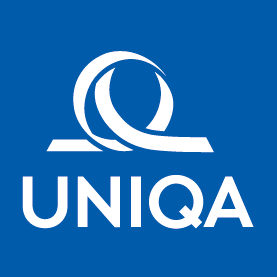6. Risk report
6.1 Risk strategy
Principles
We have set ourselves ambitious goals in connection with our corporate strategy UNIQA 2.0. In summary, we are working towards sustainable and profitable growth. We are taking the initiative, optimising processes and building on innovations. We are doing this in order to keep the promises we made to our customers, our shareholders and our employees. In addition, we make sure we have a business strategy that knows the right answer to all of our Company's risks. The Group Management Board has therefore adopted a risk strategy borne by four principles:
- We know our responsibility.
- We know our risk.
- We know our capacity to take on risk.
- We know our opportunities.
With these four principles, we will move confidently into the future and maintain a financial strength that allows us to achieve our corporate goals, keep our promises and fulfil our obligations even in turbulent times.
Organisation
Our core business is to relieve our customers of risk, pool the risk to reduce it and thereby generate profit for our Company. Here, the focus is placed on understanding risks and their particular features.
To ensure that we keep our focus on risk, we have created a separate risk function on the Group's Management Board with a Group Chief Risk Officer (CRO) who is also acting concurrently as Group Chief Financial Officer (CFO), thus creating the function of the Group Chief Financial and Risk Officer (CFRO). In our regional companies the function of Chief Risk Officer is a part of the Management Board. This ensures that decision-making is risk-based in all relevant bodies. We have established processes that allow us to identify, analyse and manage risks. Our business involves a large range of different risk types, so we employ specialists to identify and manage them.
We regularly validate our risk profile at all levels of the hierarchy and hold discussions in specially instituted committees with the members of the Management Board. To obtain a complete picture of our risk position, we draw on internal and external sources while also regularly checking for new threats both in the Group and in our subsidiaries.
Risk-bearing capacity and risk appetite
We take risks and do so in full knowledge of our risk-bearing capacity. We define this as our ability to absorb potential losses from extreme events so that our medium and long-term objectives are not put in danger.
Our risk decisions centre on our economic capital model (ECM), which we use to quantify risk and determine economic capital. The ECM is based on the standard model according to Solvency II and also reflects our own risk assessment. This is expressed in the quantification of the risks from the non-life sectors, in which we focus on a stochastic cash flow model, additional capital requirements of government bonds and a mark-to-market valuation of asset-backed securities. Based on this model, we are aiming for risk capital cover (capital ratio) of 170 per cent. As long as the capital ratio remains within the range of 155 to 190 per cent no action will be taken, since a certain level of fluctuation is absolutely normal within the framework of the Solvency II regulations. However, immediate steps will be taken to improve the capital position if the marginal value falls below 135 per cent.
We also seek external confirmation of the path we have chosen. Standard & Poor's has given us a credit rating of A–. One of our key objectives is to maintain the rating at this level or to improve upon it.
Non-quantifiable risks, in particular operational risk, litigation risk and strategic risk are identified as part of the risk assessment process and then assessed using scenario-based techniques. This assessment is then used as the basis for implementing any necessary risk mitigation measures.
Our risk strategy specifies the risks we intend to assume and those we plan to avoid. As part of our strategy process, we define our risk appetite on the basis of our risk-bearing capacity. This risk appetite is then used to determine tolerances and limits, which provide us with an early warning system sufficient for us to initiate prompt corrective action should we deviate from our targets. We also consider risks outside our defined appetite. We counter risks that fall into this category, such as reputational risk, with proactive measures, transparency and careful assessment.
We focus on risks that we understand and can actively manage. We divest ourselves of any investments in which the business principles are inconsistent with our core business. We consciously take on risk associated with life, health and non-life underwriting in order to consistently generate our income from our core business. We aim for a balanced mix of risk to achieve the greatest possible effect from diversification.
We analyse our income and the underlying risk, optimising our portfolio using value-based principles. We therefore strive for a balance between risk and return.
Opportunities
Risk also means opportunity. We regularly analyse trends, risks and phenomena that influence our society and thus our customers and ourselves. We involve our employees in the whole of the business to identify and analyse trends at an early stage, produce suitable action plans and develop innovative approaches.

